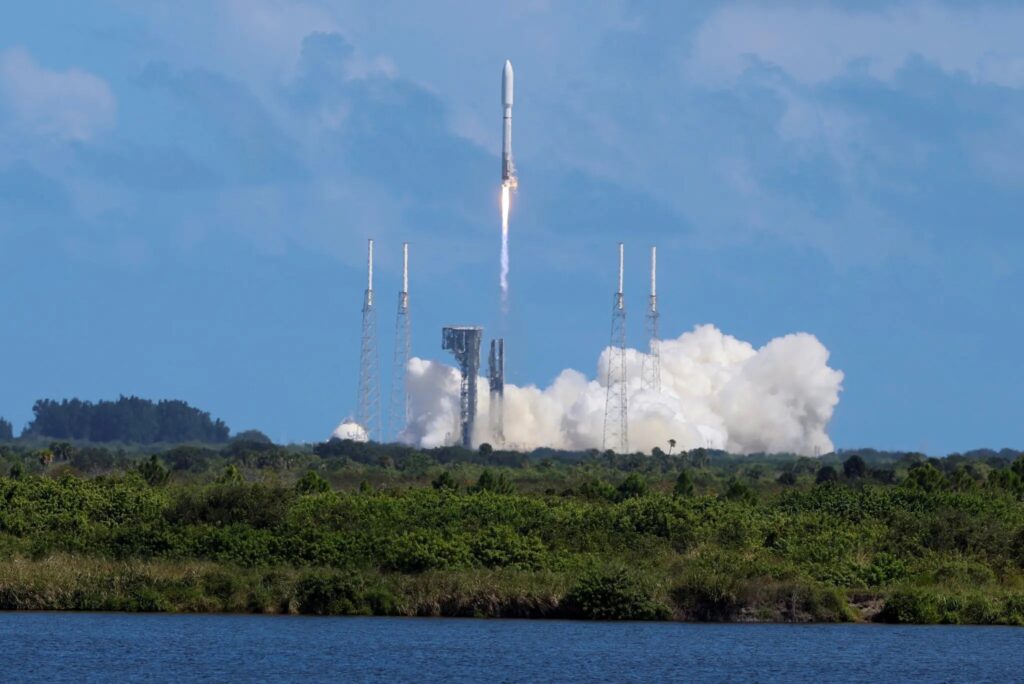Amazon has finally started building its internet satellite system after a long wait. Two prototypes of the company’s Kuiper project satellites were launched into Earth orbit this Friday at 21:36 Iran time in a mission called Protoflight from the Cape Canaveral Space Force Base in Florida on an Atlas 5 rocket from the launch and launch coalition.
The upper stage of Atlas 5 injected the Kuiprest 1 and Kuiprest 2 satellites into an orbit at an altitude of 500 km above the Earth’s surface. After deploying the solar panels and testing the systems, the satellites will send the internet connection from space to the flat and square antennas on the ground. This is the first time that the Amazon company puts a satellite in space.
According to Amazon’s website, the company started research and development work on the Kuiper project in 2018 and received a license to deploy and operate its satellite system in 2020 from the Federal Communications Commission.
The license received by Amazon gives the green light to deploy an initial system of 3,236 satellites and stipulates that the company must have at least half of the satellites operational by July 2026. These satellites will eventually compete with SpaceX’s Starlink and other companies’ satellite systems.
Most of the Kuiper satellites will be launched into near-Earth orbit aboard three heavy rockets: Launch and Launch Alliance’s Vulcan Centaur, France’s ArianeSpace Ariane 6, and Jeff Bezos’ Bezos-founded NewGlen rocket.
However, none of those missiles have yet lifted off the ground. Kuiprest 1 and Kuiprest 2 were supposed to go into space in the first flight of Vulcan Centaurus this spring; But the flight of this rocket was delayed, and as a result, Amazon decided to send its satellites into space on top of Atlas 5 in August.
Moving to Atlas 5 was actually the second launcher change for the first group of satellites of the Kuiper project. Initially, these test satellites were supposed to be launched late last year with the RS1 rocket from ABL Space Systems; But the numerous delays of that company forced Amazon to change the launcher.
If all goes well, Vulcan Centaurs will be launched for the first time before the end of this year. Ariane 6 is also scheduled to make its first flight in early 2024, and finally, New Glen will probably lift off the ground for the first time in 2025.
In contrast, SpaceX, as Amazon’s competitor, has started launching Starlink satellites years ago with its sophisticated Falcon 9 rockets. The Starlink system is now launched with nearly 5,000 satellites and is providing satellite internet services. This number will increase in the future. SpaceX has received permission to place 12,000 Starlink spacecraft into near-Earth orbit, and in addition, it wants to receive permission to launch another 30,000 satellites.
Meanwhile, Amazon’s Kuiper project has just entered the orbital test phase. Amazon says Kuiprest 1 and Kuiprest 2 will allow the company to test the technology it needs to use in the final design of its satellites.



